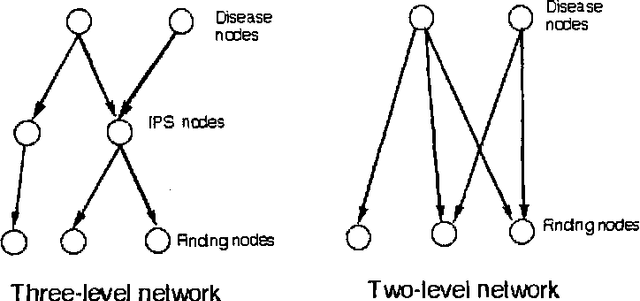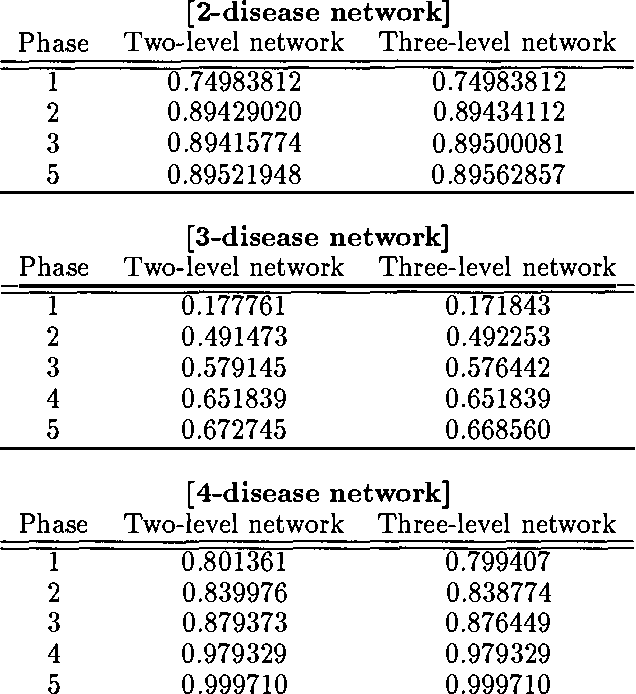Abstraction in Belief Networks: The Role of Intermediate States in Diagnostic Reasoning
Paper and Code
Feb 20, 2013



Bayesian belief networks are bing increasingly used as a knowledge representation for diagnostic reasoning. One simple method for conducting diagnostic reasoning is to represent system faults and observations only. In this paper, we investigate how having intermediate nodes-nodes other than fault and observation nodes affects the diagnostic performance of a Bayesian belief network. We conducted a series of experiments on a set of real belief networks for medical diagnosis in liver and bile disease. We compared the effects on diagnostic performance of a two-level network consisting just of disease and finding nodes with that of a network which models intermediate pathophysiological disease states as well. We provide some theoretical evidence for differences observed between the abstracted two-level network and the full network.
 Add to Chrome
Add to Chrome Add to Firefox
Add to Firefox Add to Edge
Add to Edge